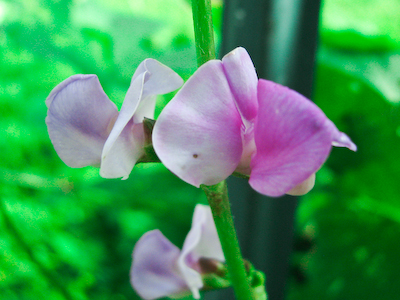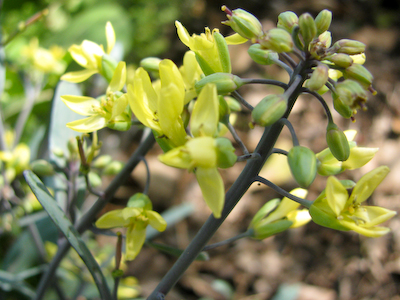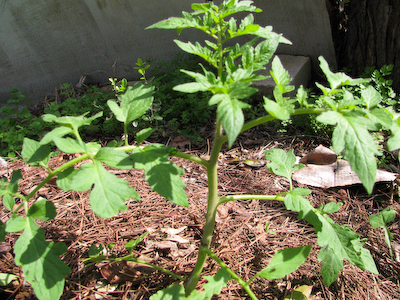Last month as I spotted some plants growing out of my compost piles, I was reminded of a fun course that I took at the University of Texas with Dr. William Doolittle called Environment, Development and Food Production. Professor Doolittle introduced us to Edgar Anderson and the idea of Dump Heaps and the Origin of Agriculture.
Hyacynth Bean Flower
In his 1952 book Plants, Man and Life, Edgar Anderson devotes a chapter to the idea that early humans may have developed agriculture via the dump heap. First he distinguishes between “closed” and “open” habitats. In a closed habitat, such as a mountaintop, only certain plants thrive. Plants from other environments tend to fare poorly if they grow at all in closed environment. Gardens are a relatively open environment in that plants from a wide array of different environments can survive and even thrive within their confines.
The dump heap is an even more open environment. Imagine left over plant parts, along with some of their seeds being constantly thrown into a fertile pile of waste material. Says Anderson, “species which had never intermingled might do so there, and the open habitat of the dump heap would have been a more likely niche in which strange new mongrels could survive than any which had been there before man came along.”
Brassica flower
Even if this tomato had managed to produce fruit before the first frost I probably wouldn’t have eaten them as it is growing out of a separate compost pile that I maintain for dog waste.
I have often seen squash grow out of a compost pile. Anderson notes that squash, along with beans and amaranth are likely candidates to have originated in dump heaps. Burdock, stinging nettle and Jerusalem artichokes tend to take over Noel’s compost piles in Wisconsin. All are weedy plants. However they are not only edible, but also extremely nutritious. According to Anderson, “the history of weeds is the history of man.” I look forward to seeing what weeds pop up next in the compost.



